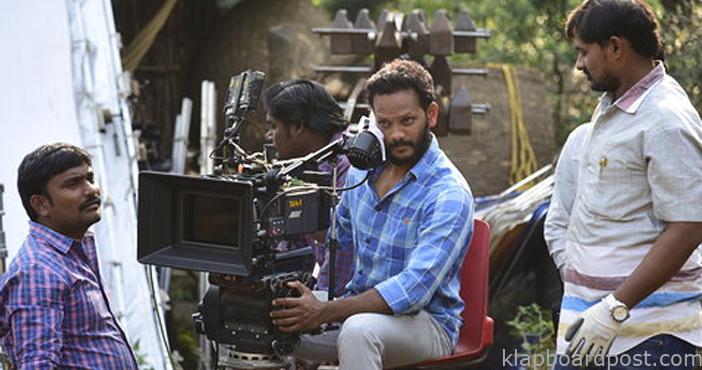Y.Sunita Chowdhary
Born and brought up in Kharagpur in West Bengal, Suresh Raghutu obviously speaks fluent Bengali. A Telugu family in West Bengal? His father was working in the Railways and Suresh studied there till he passed high school and then moved to Hyderabad. His cousin was studying arts (Bachelor of Fine Arts) at JNTU in Masab Tank and he wanted to follow suit. Apart from academics, he was into sketching, painting and also took a liking to photography and so began clicking pictures regularly. Suresh recollects those good old days when he worked hard to get a seat in JNTU. “There was an availability of 30 seats only in JNTU and I got the fifth rank but didn’t get an admission so I spent a lot of time with my cousin and his friends in the hostel. I had written the exam again the next year and got the second rank. I began attending college and simultaneously met a lot of assistant cinematographers in the industry. It is a norm in the hostel for all those pursuing photography to establish contact and have a PR with assistant cameramen. I was worried that if I didn’t get the seat the second time too, I would be wasting time and I moved into Senthil’s team as assistant cameraman. I got the opportunity to work for him and also got an admission in the college at the same time. I went around Senthil for a year, would show my works and do the assignments he would give me. He was working on Arundathi at that time and I got to work on the sets during the last leg of the film’s shoot.”
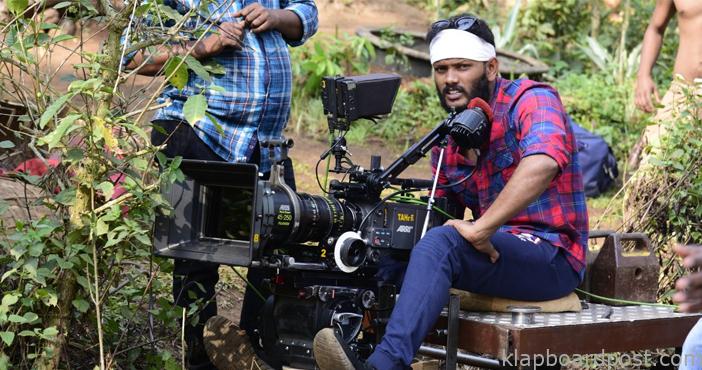 Technology doesn’t define how brilliant and important a person is, one should know how to convey the emotion. Kodi Ramakrishna did a brilliant job with Arundathi says Suresh not overestimating a DoP’s role. He was working and multi-tasking, had problems with attendance; he realised that the one year he spent by mingling with seniors, he would gauge a lot of things, be it reading compositions, lighting and or doing photo shoots. It was a four year course and he discontinued the third year as he turned too busy doing many independent projects. He further says, “The exams would clash with movie shoots, the outdoor schedules would go on for two to three months and people in the college forgot about me. I worked as an associate cameraman for Magadheera and Eega and Thakita Thakita.” What is the hierarchy and how does it work? “We first work as an assistant cameraman and then as an associate. If there are two units working, one is working with the DoP and the other with the co-director (or the first AD) then he is the First unit operative cameraman. He is sent by the cinematographer to assist the first co-director so that work can be completed swiftly when there is non-availability of dates of artistes and other issues. The second operative camera man is the one who stays with the DoP when the first operative camera man goes to the co-director. We were five people working with Senthil.”
Technology doesn’t define how brilliant and important a person is, one should know how to convey the emotion. Kodi Ramakrishna did a brilliant job with Arundathi says Suresh not overestimating a DoP’s role. He was working and multi-tasking, had problems with attendance; he realised that the one year he spent by mingling with seniors, he would gauge a lot of things, be it reading compositions, lighting and or doing photo shoots. It was a four year course and he discontinued the third year as he turned too busy doing many independent projects. He further says, “The exams would clash with movie shoots, the outdoor schedules would go on for two to three months and people in the college forgot about me. I worked as an associate cameraman for Magadheera and Eega and Thakita Thakita.” What is the hierarchy and how does it work? “We first work as an assistant cameraman and then as an associate. If there are two units working, one is working with the DoP and the other with the co-director (or the first AD) then he is the First unit operative cameraman. He is sent by the cinematographer to assist the first co-director so that work can be completed swiftly when there is non-availability of dates of artistes and other issues. The second operative camera man is the one who stays with the DoP when the first operative camera man goes to the co-director. We were five people working with Senthil.”
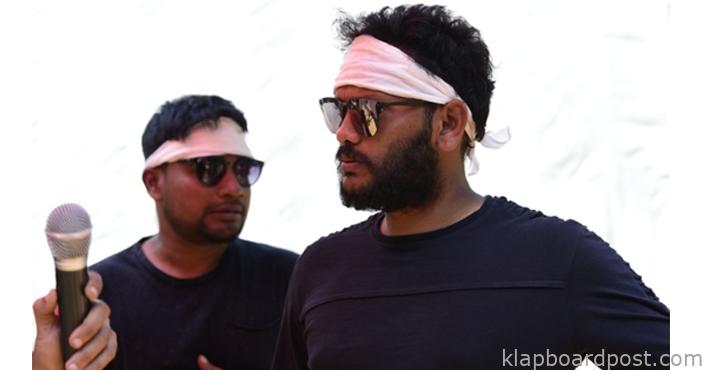 He states that apart from framing and lighting, how you convey or narrate the mood of the scene to the audience is important. “It also about which equipment is used for the shoot; is it trolley, are you taking a static frame, are you exaggerating the scene by using light or track and trolley or camera movement, colours? How the DoP understands the scene is what good cinematography is all about, how you visualise the scene, it is not the equipment per se that dominates the scene. Also not every film is the same for a DoP, it differs based on the genre, the way the director visualises it. I have signed a film with Varaahi, every day we sit down and do the shot division that stretches for days. The director gives a reading and we note down the camera movement for a particular dialogue and every day we discuss three or for scenes. We also note what emotion is required and if spot improvisation is required, we do it too.” What about the budget of the cameras? “We ask the budget from the producer and when we listen to the story itself we know if we can finish it within that money. While shooting a scene, do we need to do it with a single camera or two cameras, we give the requirement to them during the shot division itself,” he is quick to answer.
He states that apart from framing and lighting, how you convey or narrate the mood of the scene to the audience is important. “It also about which equipment is used for the shoot; is it trolley, are you taking a static frame, are you exaggerating the scene by using light or track and trolley or camera movement, colours? How the DoP understands the scene is what good cinematography is all about, how you visualise the scene, it is not the equipment per se that dominates the scene. Also not every film is the same for a DoP, it differs based on the genre, the way the director visualises it. I have signed a film with Varaahi, every day we sit down and do the shot division that stretches for days. The director gives a reading and we note down the camera movement for a particular dialogue and every day we discuss three or for scenes. We also note what emotion is required and if spot improvisation is required, we do it too.” What about the budget of the cameras? “We ask the budget from the producer and when we listen to the story itself we know if we can finish it within that money. While shooting a scene, do we need to do it with a single camera or two cameras, we give the requirement to them during the shot division itself,” he is quick to answer.
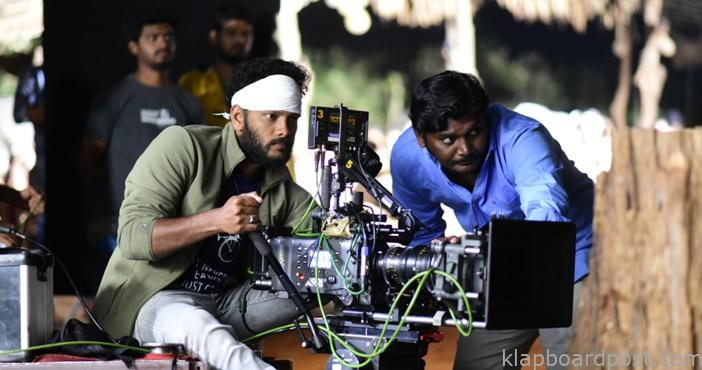 Though he waxes eloquent on Senthil and says he is one of the coolest DoP he ever worked with and there is never a gap between him and his assistants, he reiterates that you can’t imitate and allow their influence on yourself. He adds, “If it happens we can’t create our own individuality or brand. As long as we work with a DoP, we follow his instructions and do what he says. We do discuss ideas, but if he doesn’t like it we will go along with him because he has a clear cut visual on his mind.” Ask him if ad film makers worth the hype, he explains, “When an ace ad film maker announces a film, people tend to wonder how he will executive it. It happened when Rajiv Menon came in, but none got the hype he got. All said and done, it is the emotion that matters even in an advertisement. There is a way you shoot if it is a beauty product, there is another emotion when it concerns a family advertisement.”
Though he waxes eloquent on Senthil and says he is one of the coolest DoP he ever worked with and there is never a gap between him and his assistants, he reiterates that you can’t imitate and allow their influence on yourself. He adds, “If it happens we can’t create our own individuality or brand. As long as we work with a DoP, we follow his instructions and do what he says. We do discuss ideas, but if he doesn’t like it we will go along with him because he has a clear cut visual on his mind.” Ask him if ad film makers worth the hype, he explains, “When an ace ad film maker announces a film, people tend to wonder how he will executive it. It happened when Rajiv Menon came in, but none got the hype he got. All said and done, it is the emotion that matters even in an advertisement. There is a way you shoot if it is a beauty product, there is another emotion when it concerns a family advertisement.”
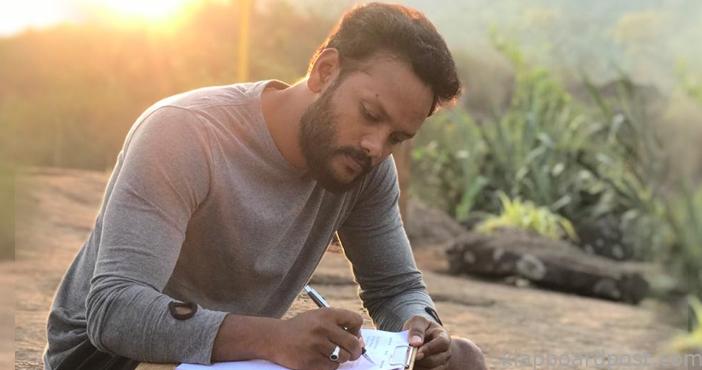
He narrates his association with Praveen Sattaru. “I began doing commercial advertisements and documentaries during the final stages of the shoot of Eega. Praveen Sattaru was working on an advertisement and was hunting for a cinematographer and CV Rao who was the technical head referred me to Praveen Sattaru. After working in that ad film I was asked to work on Chandamama Kathalu. I followed it up with Nannu Dochukunnavate and Aina Istam Nuvvu which is Keerty Suresh’s first film. Chandama Kathalu was an anthology which is a rare opportunity I got and I found it challenging. There were eight stories and loved playing with colours. French cinematographer Bruno Delbonnel is my favourite and I am inspired by him. Praveen Sattaru gave me freedom and I would design the colour palette according to the psychology of the eight characters and the phase that they go through in life. I was offered Garuda Vega too but left in between because I had family issues. I shot fifty percent and the director gave me credits and in the success party too he gave me enough importance. He is very committed to his work and believes in his work, never gets confused or influenced.”
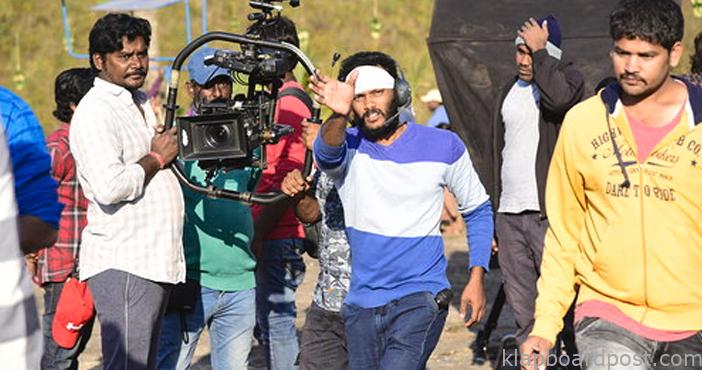
“About Aakashvani, I was with the director Aswhin Gangaraju (assistant director to Rajamouli and we did short films together) right from the time he narrated the plot and wrote the script. I found the plot interesting, and was with him from the initial stages of scripting. I spent two years on pre-production and the project is close to my heart. It has been delayed to the lockdown. It isn’t a regular film, it is a rare subject that you get to work on. We shot in Paderu for 60 days in the midst of nature and tried shooting with sunlight. I used light but we felt that it was shot in natural night. We were disconnected with people, no phone signals in the deep forest. We used earthy colours in tandem with the costumes,” he adds. Ask him how he upgrades himself, he cites an example of a film that he did two years back and doesn’t like it anymore. There is a lot of scope for improvement, he says. Also sub consciously he doesn’t like doing things repeatedly, be it scenes or working on an identical script. “I watch world cinema a lot. I read each frame. I read manuals regularly and since we are registered we get updates regularly.”
